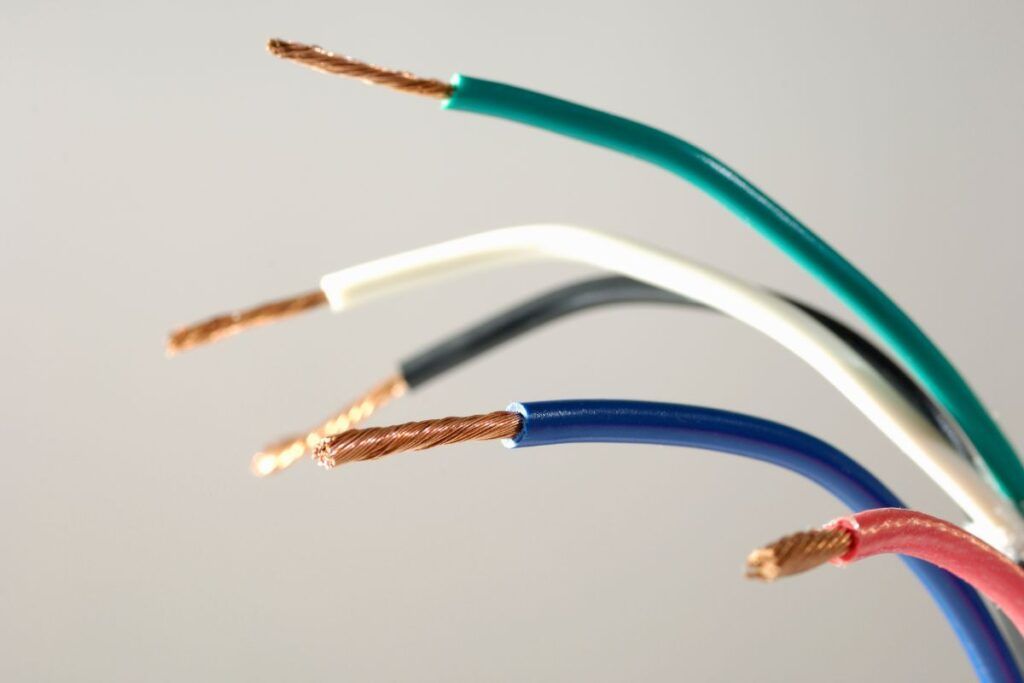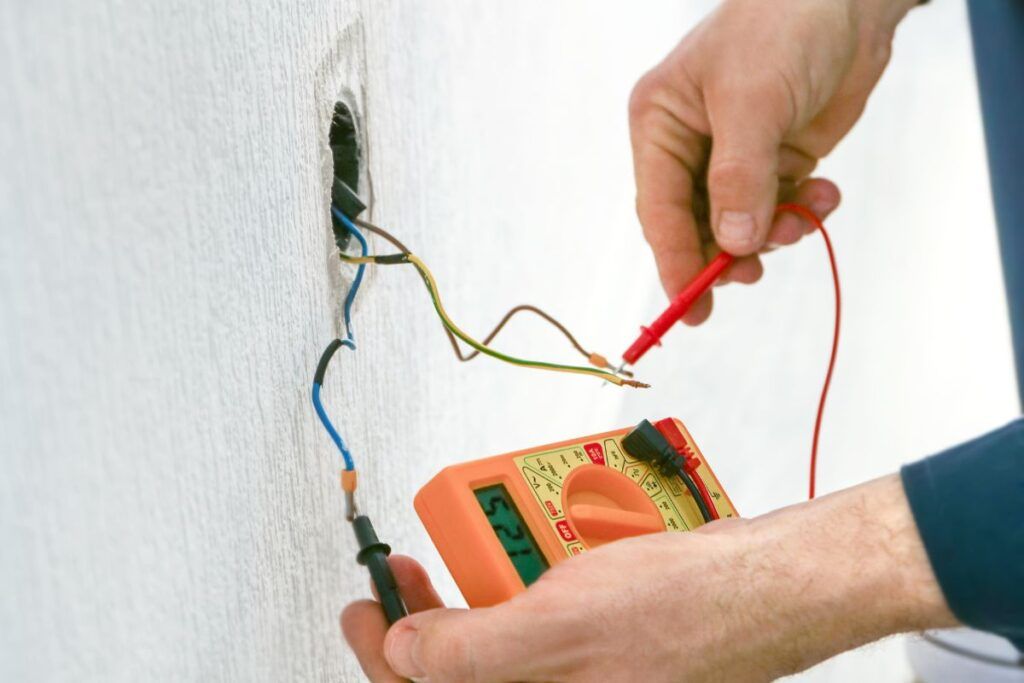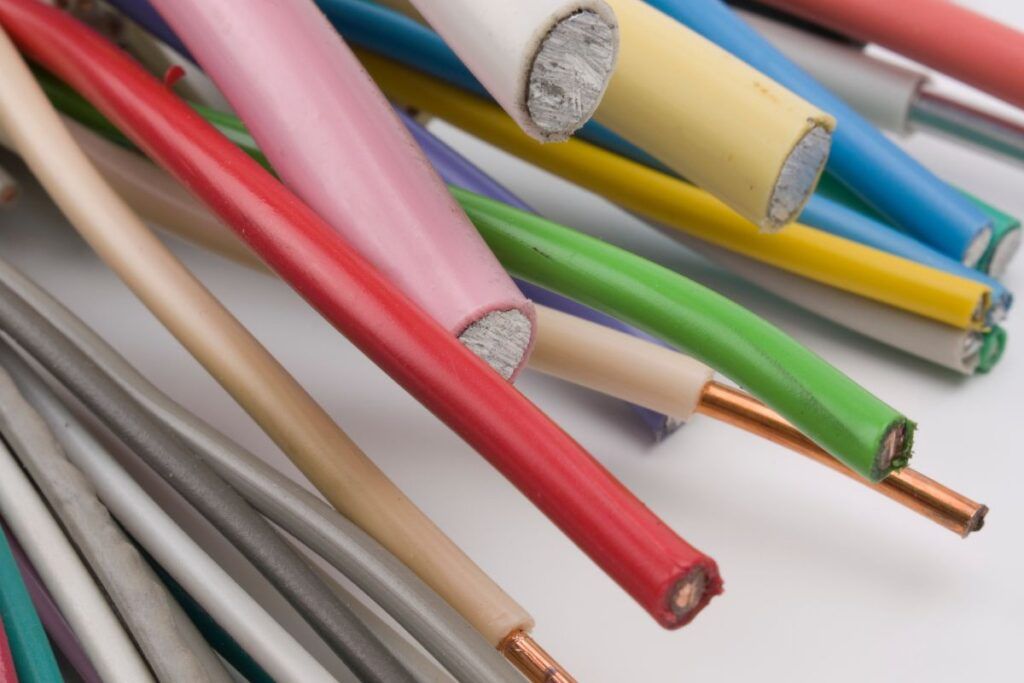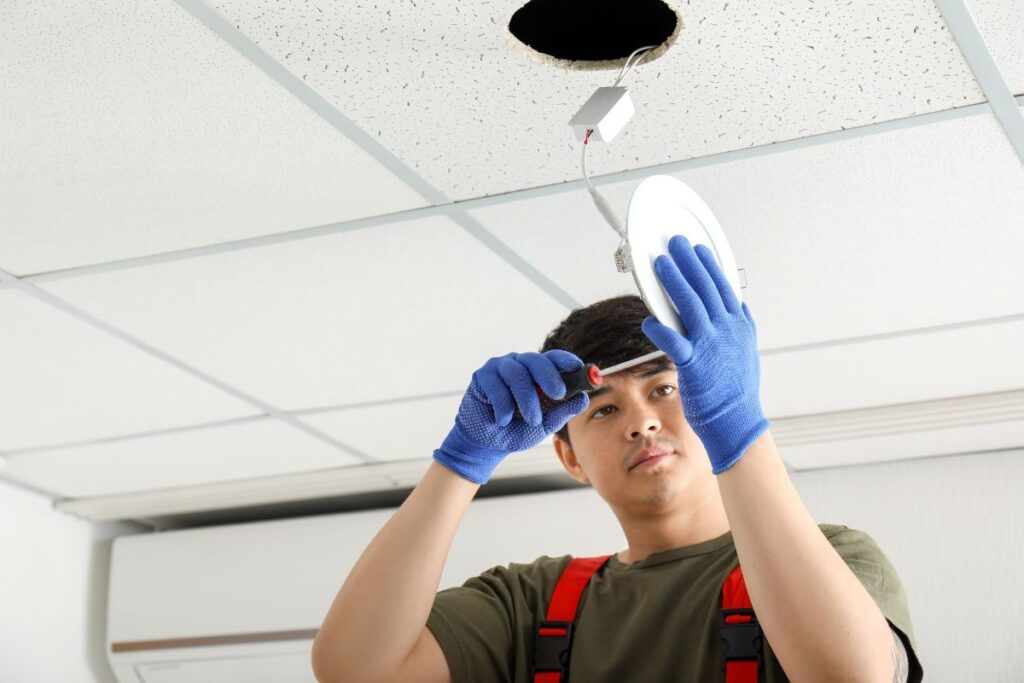The wire gauge size and ampacity work side by side. You must choose a wire size to determine its amperage capacity. Knowing the wire gauge and its ampacity helps you use it in a proper application. Today, we will share the ampacity of 18 gauge wires.
Generally, the 18 gauge wires will carry up to 14 amps at 194°F. However, you should not use them for residential wiring as they can carry power for shorter distances only. 18 gauge wire is small in diameter and is mainly used in low voltage appliances like an alarm clocks, mood lights, etc.
However, it would be best to consider certain conditions like the wire length, insulation, power, etc. They make all the difference. Stick till the end to know the correct ampacity and usages of 18 gauge wires and conditions determining the amp for 18 gauge wires.

Check out our list of top-handpicked products for all your electrical, appliance, and HVAC system needs to keep your home running smoothly.
This post includes some affiliate links.Different types of 18 gauge wire insulation
The different types of 18 gauge wires don’t mean that the wires are made up of different materials.
The different wire types in 18 gauge indicate the wire size in terms of insulation.
The better the insulation, the better it will handle the current flow without overheating or melting.
Sometimes, the 18 gauge wires are used for grounding.
It doesn’t matter where you are applying it.
The wire is used as a ground wire if it doesn’t have any insulation.
When a wire is used for grounding, it will carry the extra current flow during short circuits.
ULs (Underwriters Laboratories Inc)
Some 18 gauge wires are ULs (Underwriters Laboratories Inc).
The insulation of the wires is not very thick or heavy, and it is rated at voltage.
UL1015 18 gauge wire will carry up to 600 volts at the temperature rating of 221°F.
UL1007 wire will handle 300 volts at the same temperature rating.
Teflon
The next wire type is Teflon.
The 18 gauge wires with Teflon insulation can handle extreme temperatures, nearly 392°F.
However, the copper part of the wire with such insulation does not tolerate the stress alone.
There are some strands of silver wiring wrapped around the wire.
Nylon
The next wire insulation is nylon coating.
These are different from the other insulation and nowhere near tolerating high temperatures.
These wires are coated with PVC and are cheaper than Teflon with silver strands.
When you remove the silver strands, the wire becomes more affordable.
The 18 gauge wire thickness may be very less than the other gauges, but this thin wire is used for several small devices.
How many amps can an 18-gauge wire handle?
Generally, an 18 gauge wire is known to carry amps between 3 and 15 easily without any issues.
But, to be more precise, the 18 gauge wires will handle 14 amps according to the National Electric Code, or NEC.
The temperature rating is 194°F.
But, certain conditions exist, like the wire length, voltage, distance, wire material, etc.
Together, all these conditions can make a huge difference in the ampacity of 18 gauge wires.
Sometimes, 15 amps are also considered the latest load to be handled by the 18 gauge wires.
But wires on the maximum amp can overheat if their quality is poor.
How many amps will 18 gauge wire handle at 12 volts?
At 12 volts, the 18 gauge wires will handle amps ranging between 0.25 and 10, depending on the distance.
If the distance is longer, so will the wire length.
If the wire is long, the amperage of the current should be low.
For example, if you run the wire at 7.3 feet, the 18 gauge wire at 12 volts will handle only 5 amps.
Similarly, an 18 gauge wire running at 2.4 feet will handle 10 amps.
Using the 18 gauge wires at low currents is always safe to avoid insulation melting.
How many amps with 18 gauge wires handle at 24 volts?
At 24 volts, the 18 gauge wires can carry amps ranging between 10 and 50, depending on the distance.
Let’s have a look at some amps and distances:
- 10VA – 451 feet
- 20VA – 225 feet
- 30VA – 150 feet
- 40VA – 112 feet
- 50VA – 90 feet
The higher the amp, the lower the distance.
If the wire is very long, the resistance increases.
So, the wire gets overheated; thus, such wires are not recommended for longer distances.
How many amps are at 120 and 220 volts?
At both 120 and 220 volts, the 18 gauge wires will handle around 14 amps.
Will the 18 gauge wire run perfectly at 120 volts?

The thickness of the 18 gauge wire is only 1.02 mm.
That is why these wires are called 1mm wires.
Since the wire is so thin, 18 gauge is not recommended to be used for longer distances, heavy appliances, and higher voltages.
Mostly, these wires can handle voltages only up to 47 volts.
Running the wire in higher amps or voltages can melt the wires and create a fire hazard.
However, the voltage highly depends upon the distance you are using it and the wire material.
If the wire material is copper and the length is very short, you can use it.
Always stay within the estimated current and voltage for 18 gauge wires.
Otherwise, there will be a bad short circuit and fire hazards.
How many amps will 18 gauge stranded wire handle?
Here also, the 18 gauge wire will handle 14 amps safely without any overheating issues.
The solid wires will have a slightly higher amp carrying capacity than the stranded wires because they won’t get overheated easily due to their strong insulation.
Sometimes, your contractors force you to limit the amp from 14 to 7 while using the 18 gauge stranded wires.
How many amps with an 18 gauge automotive wire handle?
The 18 gauge automotive wires can handle amps ranging between 3 and 15, depending on the distance.
The distance should range between 2.4 feet and 12.2 feet.
Shorter wires with low resistance mean fewer chances of overheating.
So, you can use the shorter wires for higher amps without any risk of overheating.
What factors affect the amp of 18 gauge wires?

Wire material and distance are the most important factors you should consider while selecting the wire gauges and using them in their respective amps.
If the wire material is of good quality, you can use the 18 amp wires for slightly higher amps.
Similarly, you may use the wire for higher amps if the distance is shorter.
Let’s talk about it in detail.
Wire material
The wire material will, of course, affect the amperage.
Copper and aluminum wires are commonly used wires for electrical purposes.
Copper wires are the most famous due to their high conductivity, durability, flexibility, and strength.
The copper wires carry current loads with overheating, contracting, and expanding.
So, you can use them for longer distances.
The wire develops a green patina due to prolonged exposure to the atmosphere.
It prevents corrosion. However, it doesn’t affect the quality.
The wires are malleable, which makes the wire comfortable to work by bending or folding without any chances of breakage.
On the other hand, aluminum wires cannot withstand too much current flow because they overheat quickly.
The wires are 61% less conductive than copper wires.
Besides, the wires contract and expand too much, thus interrupting the current flow.
But, two good things about aluminum wires are their cost and weight.
The wires are cheaper than copper wires.
The wires are 30% lighter than copper, which makes handling easier.
Due to this lightweight, the aluminum wires badly react to water, unlike the copper wires.
Coppers do not react to water due to their thickness and heavy weight.
A better version of aluminum is copper-clad aluminum.
The wires have copper fittings, giving them copper benefits, like good conductivity.
The wires are cheaper than copper but more expensive than pure aluminum.
To use aluminum wires for the maximum amp, you must use something other than 18 gauge wires.
To replicate an 18 gauge copper wire, you might require a 14 or 16-gauge aluminum wire.
Distance
According to the NEC, the maximum amp for 18 gauge wires is 14 amps.
The distance has to be shorter to use 18 gauge wires for higher amps.
If the distance is shorter, the wire length will be shorter.
Long wires have more resistance than shorter ones, for which the wires get overheated faster.
That is why there is a limit of amp for using every wire gauge.
But, if you use the wire gauge for a shorter distance, you can run it for appliances that carry a little higher amp, like 16 or 18 amp.
However, the amp should be at most 14-15 amps.
Generally, the 18 gauge wires are designed for 14 amps.
Even if you use copper wires, there is a limit to the amp and distance.
Distance sometimes gets affected by the voltage.
For example, at 120 volts, an 18 gauge wire will carry 14 amps and run 19 feet.
At 240 volts, an 18 gauge will carry the same amp but run at 38 feet.
What is the acceptable voltage drop?
The voltage drop for 18 gauge wires should be under 3% for the lights and 5% for other electrical appliances.
Considering the voltage drop, below are some instances of 18 gauge wire used at 12 volts:
- If the current is 5 amps, you can run the wire up to 5 feet.
- If the current is 10 amps, you can run the wire under 3 feet.
Where can I use 18 gauge wires?

The 18 gauge wires are relatively thin.
So, you cannot use it for high-voltage appliances.
The wires are perfect for appliances with low voltage or amps, like low-voltage lights.
You can use lamp cords, vehicle batteries, and automotive applications with 18 gauge wires.
The exact applications will depend on the material, like copper, silicon, stainless steel, etc.
You can also use 18 gauge wires in extension cords to power devices like drills, sanders, and appliances at 600 watts.
Other appliances to run with 18 gauge wires are:
- Small lamps
- Fans
- Alarm clocks
- Mood lights
- Small cameras
- Locks
- Stereo equipment
- Other small devices carrying very little current
The 18 gauge wires are sometimes also used as ground wires.
Can I join 18 gauge wires with any other wire gauges?
The wires do not cause issues alone, and changing wires in the circuits does not create any problems.
The problem arises when you join two wires with different roles.
Connecting two different wire gauges in the same circuit can increase the current flow, melt the wire insulation, explode the wire, and start a fire.
The same happens when you join an 18 gauge wire with a 14 gauge wire.
The branch circuits with 120/240 volts in the USA will have 15 amps of the current load.
A 14 gauge copper wire is important to avoid electrical accidents.
So, using an 18 gauge wire or joining it with a 14 gauge wire in the circuit is dangerous.
Final thoughts
The best amp for 18 gauge wires ranges between 3 and 15 amps, but 14 amps are considered the best according to the NEC code.
The wire is very thin, measuring around 1.02mm. So, you cannot use the wire for higher amps, which can overheat and melt the wire and start a fire.
The wire material and the distance may sometimes affect the amp. Copper wires can carry a better current than aluminum wires. So, you might use them for at least 15 amps.
Besides, the distance also has to be shorter. Shorter lengths keep the resistance low and prevent wire overheating.
Data Source: National Electrical Code, NEC Wire Table, Electrical wiring, Home wiring.


